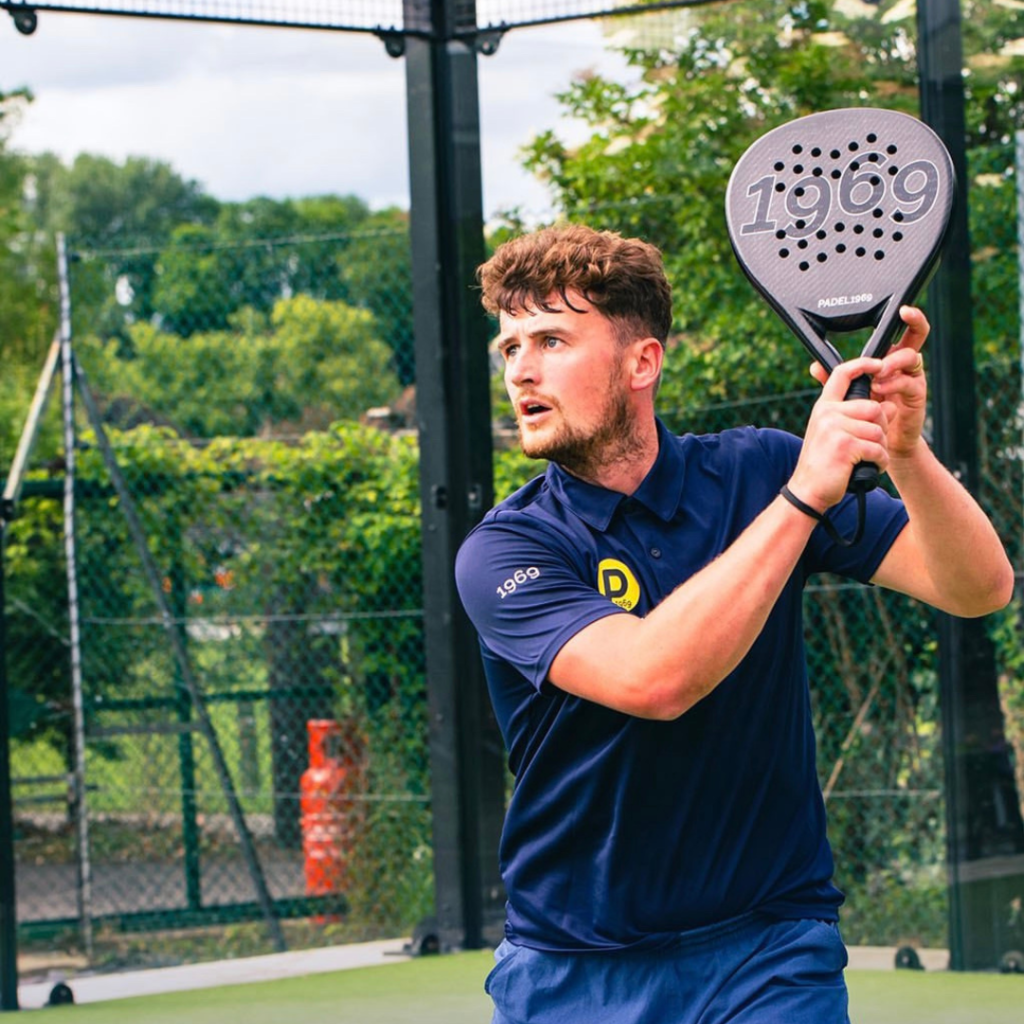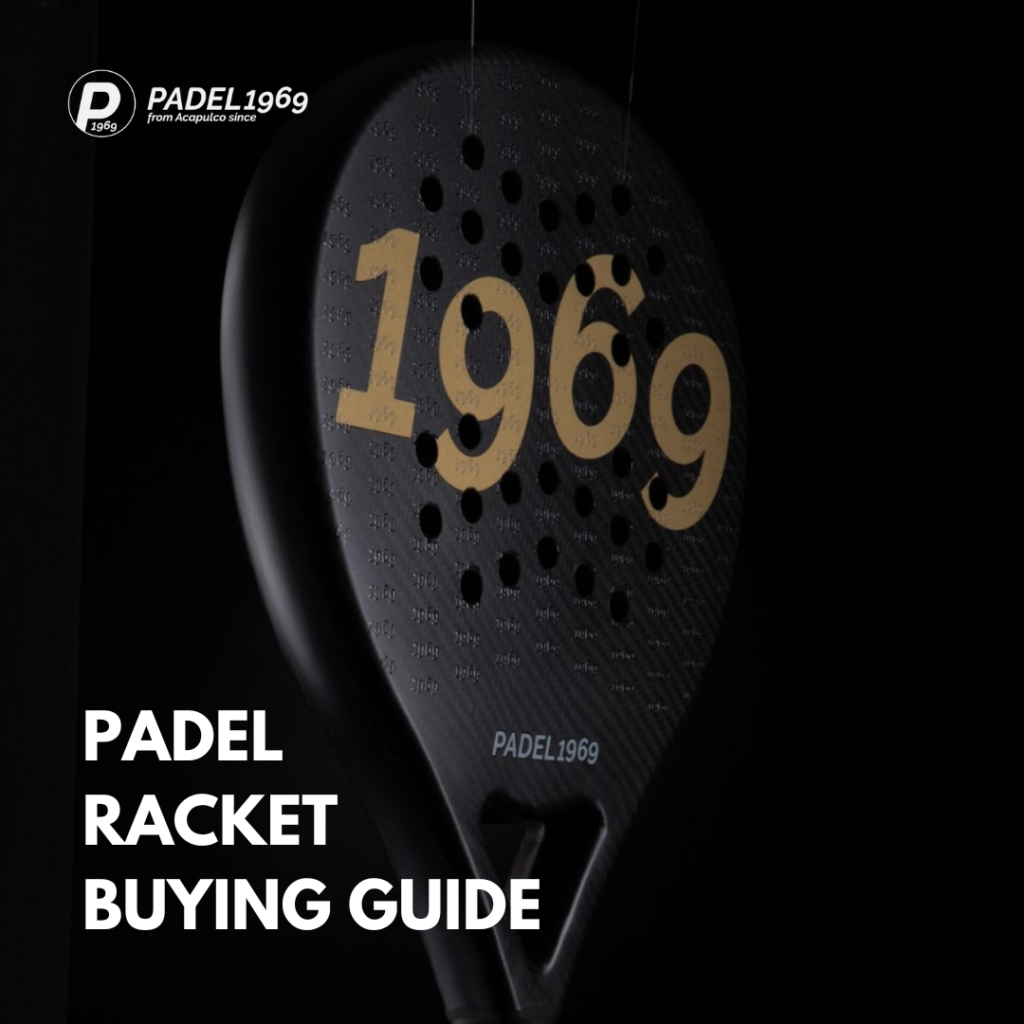Elevating your Padel game demands lots of hard work on technique, stance, and drill exercises, however, the right gear might be the thing that is keeping you from reaching your full potential.
Padel Rackets Might Harm you
This goes without saying, but a padel racket is the most important gear that can make or break your game. Whether you are an amateur or a professional player, you’ll need a racket that matches your style and level. Using the wrong racket can lead to serious life-long injuries; for example, if you were a beginner using a heavier racket, it might strain your arm, wrist, and shoulder. Quality rackets that match your playing style and level will prevent injuries and guarantee fun games.
While exploring your options, it’s important to seriously take into consideration things like impact surface, materials, shape, balance, weight, firmness, perforation, player ability, playing frequency, technique, budget, and warranty.

Which Padel Racket is Best for You
Racket selection varies based on playing level. Beginners will benefit from lighter rackets for better control, intermediate players need a balance of power and accuracy, while professionals often prefer heavier rackets for maximum power and accuracy.
There are three main racket shapes: round (for more control), diamond (for more power), and teardrop (a mix of both). The balance of a racket can be low, mid, or high, affecting its weight distribution and play characteristics.
Materials play a crucial role in racket performance. Frames can be made of carbon, fiberglass, or Kevlar. The core is typically EVA or foam, while the impact surface is usually fiberglass or carbon fiber of varying densities (3K, 6K, 9K, 12K).
Notably, handmade rackets often offer higher quality and durability. Padel1969 offers handmade rackets made in Spain with imported materials. Our rackets are made with premium quality build, without forgetting that we offer a lifetime warranty and worldwide shipping.
Padel Rackets for Beginners
If you are a beginner, it’s advisable to stick to lightweight and easy-to-use Padel rackets. Such Rackets are made for control more than power, as a beginner you will have to learn to control the racket and adapt your stance before being able to shoot powerful shots. As you start gaining more experience, you can switch to Padel rackets that give you more power over control. At the same time, it is equally important to make sure that the padel racket fits your budget – as you’ll find the market flooded with padel rackets ranging between $100 and $1,000 or more.
Our experts at Padel1969 have compiled an in-depth guide titled “What to Look for When Buying a Padel Racket” to help you choose the right Padel racket. Don’t forget to read it.
If you want a quick guide to know what Padel rackets are made of, read more.
How to Choose a Padel Racket
Since Padel is played with special rackets, let’s look at what they are like.
As we have established, a good padel racket is determined by several factors, including the player’s skill level, racket shape, balance, weight, and materials used.
The main parts of a padel racket are the frame, the core, and the impact surface (the face). Let us see what each part is made of and how that could help shape your perfect racket.
Frame Materials
| Frame Material | Utility |
| Carbon | balance between hardness, lightness, and resistance. Wear-resistant and lightweight. |
| Fiberglass | Cheaper, more elastic, and softer than carbon. Heavier and less durable. |
| Kevlar | Strongest but most expensive. Used in high-end professional rackets |
Core Materials
| Core Material | Utility |
| EVA (Ethylene Vinyl Acetate) | Ultra Soft: Comfortable, vibration-free, greater rebound, limited power Soft: Popular, good balance between power and control Medium: Firm feel with good power and control Hard: Favored by advanced players for power |
| Foam | Soft touch, minimum vibration, lots of bounce. Less durable than EVA |
Face Materials
| Face Materials | Utility |
| Fiberglass | Comfortable, cheap, heavy. Less durable, gives control and power. |
| Carbon Fiber | Lightweight, durable, more control and power. Preferred by advanced players. 3K: Most common, more control, less power, lightweight 6K & 9K: More power, less control than 3K 12K: Cheaper to produce, large and robust look, highest power but least control |
Key Features to Consider
Padel rackets are not made up of the frame, the core, or the impact surface alone. There is much more to consider when figuring out the best racket for you and your level of play.
First, you have to make sure the perforation is set to the agreed-upon standards, as proper hole placement makes for aerodynamics, balance, and weight reduction. Second, a rough impact surface gives more spin t than a smooth surface. Third, the shape:
- Round: Light, flexible, good for beginners and defensive play
- Diamond: For advanced players, more power and speed
- Teardrop: Hybrid, balanced power and control, good for intermediate players
Fourth, balance and weight distribution affect power and control. Next, weight generally up to 400 grams, as lighter rackets are best for beginners and heavier for advanced players. And finally, firmness, soft is better for defense and beginners, while hard is best suited for attack and experienced players.
Other Considerations
- Player Ability: Beginner, intermediate, or professional.
- Playing Frequency: Casual vs. regular players.
- Player Technique: Defensive vs. offensive play style.
- Costs: Budget based on skill level and frequency of play.
- Warranty: Check warranty period and conditions.
Quick Tips for Choosing the Right Padel Racket
- Consider your skill level, playing style, and frequency when selecting features.
- Read ratings and reviews for realistic feedback.
- Balance your budget with your needs and skill level.
- Ensure the racket meets official regulations (e.g., perforation requirement).
Book a call with us if you want to build a Padel court and don’t know where to start or contact us at [email protected] for more on our advisory services.
Need advice about managing a club or installing a Padel court? Click Here to learn more.
padel1969.com
PADEL1969 | from Acapulco since 1969


